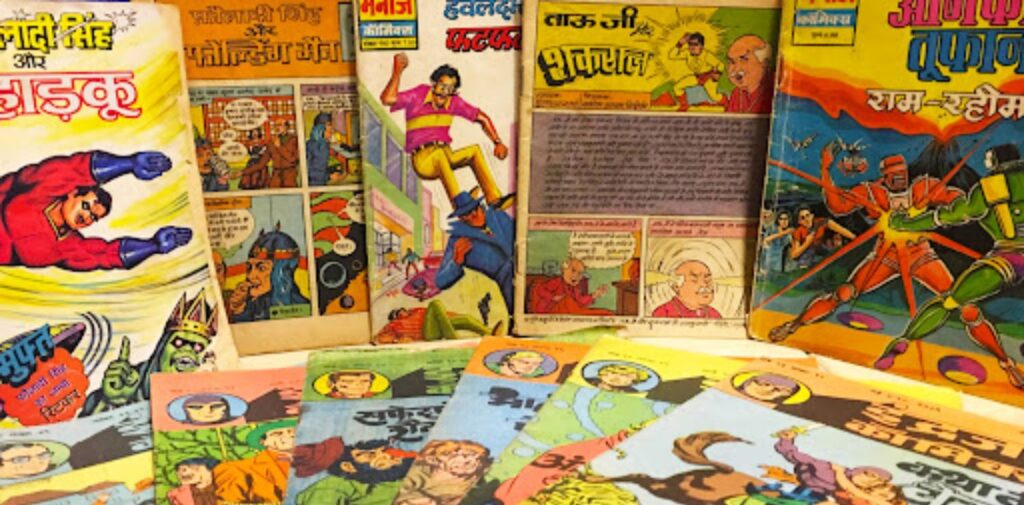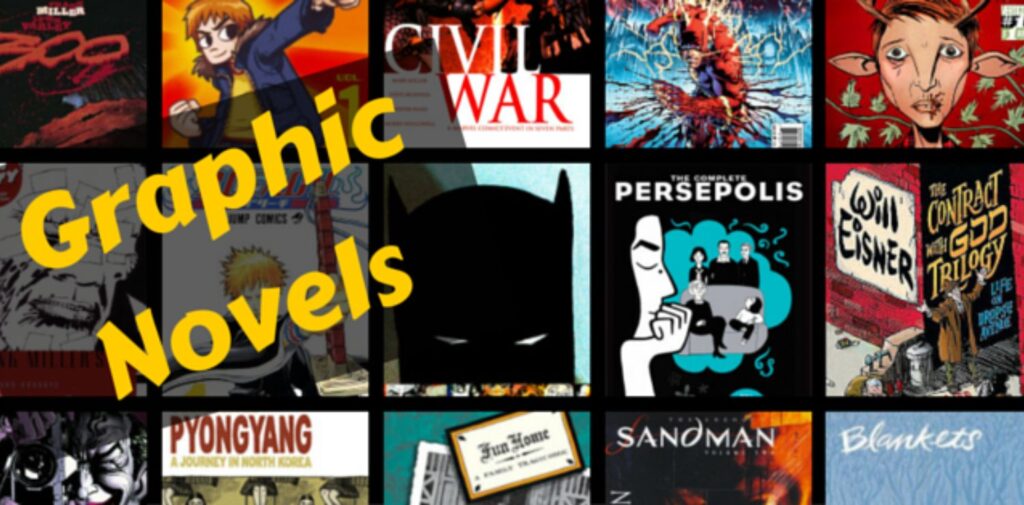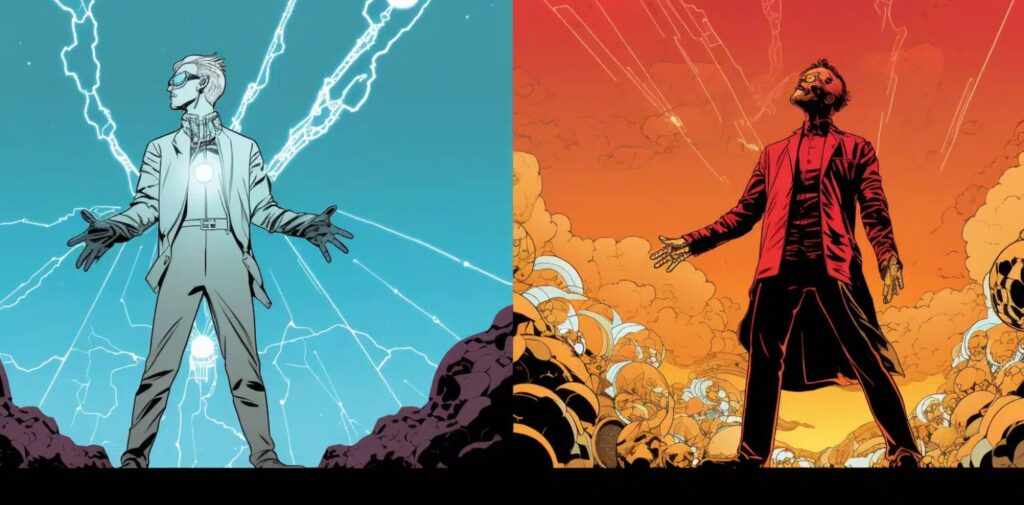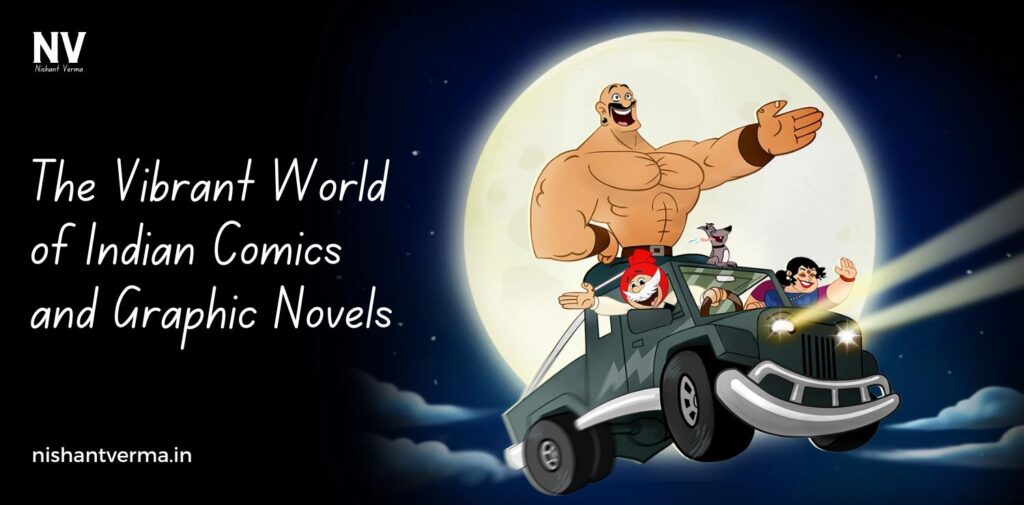Indian comics and graphic novels have become an essential part of our cultural landscape. From superheroes to everyday heroes, these colourful pages tell stories that resonate with people of all ages. Let’s explore how Indian comics and graphic novels are influencing contemporary culture, reflecting our society, and fostering creativity.
A Brief History of Indian Comics
The history of comics in India dates back several decades. While Western comics gained popularity in the mid-20th century, Indian comics started to flourish in the 1960s. Iconic publications like Bal Bharti and Amar Chitra Katha introduced readers to traditional Indian tales, mythology, and history through engaging illustrations. These early comics laid the foundation for a unique Indian style, blending storytelling with art.
As the years passed, the comic scene evolved. The 1980s and 1990s saw the emergence of various publishers like Raj Comics and Tinkle, which introduced memorable characters such as Nagraj, Suppandi, and Shikari Shambhu. These characters became beloved by children and adults alike, showcasing the creativity of Indian writers and artists.

The Rise of Graphic Novels
In recent years, graphic novels have gained popularity in India. Unlike traditional comics, graphic novels often tackle complex themes and narratives. They provide a platform for authors to explore serious topics, such as identity, social issues, and personal experiences. Graphic novels like “The Eternal Sunshine of the Spotless Mind” by Nikhil P. and “Delhi: The Last City” by Gaurav Shrivastava reflect the changing landscape of Indian storytelling.
These graphic novels cater to a more mature audience, allowing readers to connect with deeper themes. They combine stunning artwork with intricate narratives, offering an immersive experience that resonates with the reader.

Reflection of Contemporary Culture
Indian comics and graphic novels mirror the society we live in today. They reflect our values, struggles, and aspirations. Here are a few ways in which they impact contemporary culture:
- Addressing Social Issues: Many Indian comics and graphic novels tackle pressing social issues. They address topics like gender equality, mental health, and environmental concerns. For instance, graphic novels like “The Little Book of Feminism” highlight women’s rights and empowerment, inspiring readers to think critically about social change. By weaving these themes into their stories, creators encourage discussions and raise awareness.
- Celebrating Diversity: India is a land of diverse cultures, languages, and traditions. Comics and graphic novels celebrate this diversity by showcasing stories from different regions and communities. They bring to life characters from various backgrounds, promoting inclusivity and understanding. Works like “Kari” by Amruta Patil portray the lives of LGBTQ+ individuals, fostering acceptance and empathy in society.
- Blending Tradition and Modernity: Indian comics and graphic novels often blend traditional elements with modern storytelling techniques. Many creators draw inspiration from Indian mythology and folklore, incorporating these rich narratives into contemporary settings. This fusion not only preserves our cultural heritage but also makes it relevant to today’s audience. Characters like Chacha Chaudhary and Bhokal continue to engage readers while connecting them to their roots.
- Inspiring Creativity: The vibrant world of Indian comics inspires young artists and writers to express their creativity. Comic workshops and festivals are becoming more popular, encouraging aspiring creators to explore storytelling through visual art. This rise in creativity nurtures a new generation of storytellers who are eager to share their unique perspectives.
The Influence of Technology
The digital age has transformed the way comics and graphic novels are created and consumed. With the rise of smartphones and tablets, digital comics have gained popularity. Platforms like Webtoons and Tapas allow creators to publish their work online, reaching a wider audience. This accessibility has given rise to many independent artists who share their stories with the world.
Social media plays a significant role in promoting Indian comics and graphic novels. Creators can connect with fans, receive feedback, and build a community around their work. This interaction fosters a sense of belonging and encourages collaboration among artists, leading to innovative projects.

The Global Impact
Indian comics and graphic novels are not just limited to the Indian audience. They are making waves on the global stage as well. International publishers are recognizing the talent of Indian artists and writers, leading to translations and adaptations of popular works. Graphic novels like “The Adventures of Tintin: The Crab with the Golden Claws” have gained recognition in various countries, showcasing Indian storytelling to a broader audience.
This global reach not only elevates Indian culture but also allows for cross-cultural exchanges. Readers from different backgrounds can connect with Indian stories, leading to a better understanding of our diverse society.
The Future of Indian Comics and Graphic Novels
The future of Indian comics and graphic novels looks bright. As more creators enter the field, we can expect a variety of stories that reflect the ever-changing landscape of our society. With advancements in technology, the possibilities for storytelling are limitless.
Moreover, educational institutions are recognizing the value of comics as a medium for learning. Graphic novels are being incorporated into curricula, helping students engage with subjects in a fun and interactive way. This trend will likely continue, paving the way for a new generation of readers and creators.
How to Support Indian Comics and Graphic Novels
If you’re interested in exploring the world of Indian comics and graphic novels, here are some ways to support them:
- Buy Local: Purchase comics and graphic novels from local bookstores or online platforms. This helps support independent creators and publishers.
- Attend Events: Participate in comic conventions, book fairs, and workshops. These events offer opportunities to meet creators, attend discussions, and discover new works.
- Spread the Word: Share your favourite comics and graphic novels on social media. Recommend them to friends and family to help raise awareness.
- Create Your Own: If you’re inspired, try creating your own comic or graphic novel! It’s a fantastic way to express your creativity and share your stories.
Conclusion
Indian comics and graphic novels are more than just entertainment; they are a reflection of our culture, values, and society. They address important issues, celebrate diversity, and inspire creativity. As this vibrant medium continues to evolve, it will undoubtedly play a significant role in shaping contemporary culture. Whether you’re a lifelong fan or a newcomer, there’s a world of stories waiting for you in the colourful pages of Indian comics and graphic novels. Embrace the adventure and explore the incredible tales that await!




